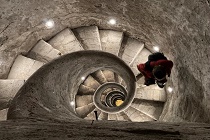 The first post-pandemic meeting of the Urban Geology Expert Group (UGEG) of EuroGeoSurveys was held at the headquarters of the Italian Geological Survey (ISPRA) in Rome from 24 to 26 October 2022. The three-day meeting also included a workshop on calculating the Urban Geo-Climate Footprint for cities around the world.
The first post-pandemic meeting of the Urban Geology Expert Group (UGEG) of EuroGeoSurveys was held at the headquarters of the Italian Geological Survey (ISPRA) in Rome from 24 to 26 October 2022. The three-day meeting also included a workshop on calculating the Urban Geo-Climate Footprint for cities around the world.
The meeting was attended by more than 24 delegates from 16 countries, including three representatives from the Polish Geological Institute-PIB. Our Institute was represented by Grzegorz Ryżyński, Anna Stawicka and Jakub Kobiela, the employees of the Department of Engineering Geology.
The agenda of the meeting was varied and included discussions within the UGEG, a field trip presenting problems of the geology of urbanised areas around Rome, and the Urban Geo-Climate Footprint workshops.
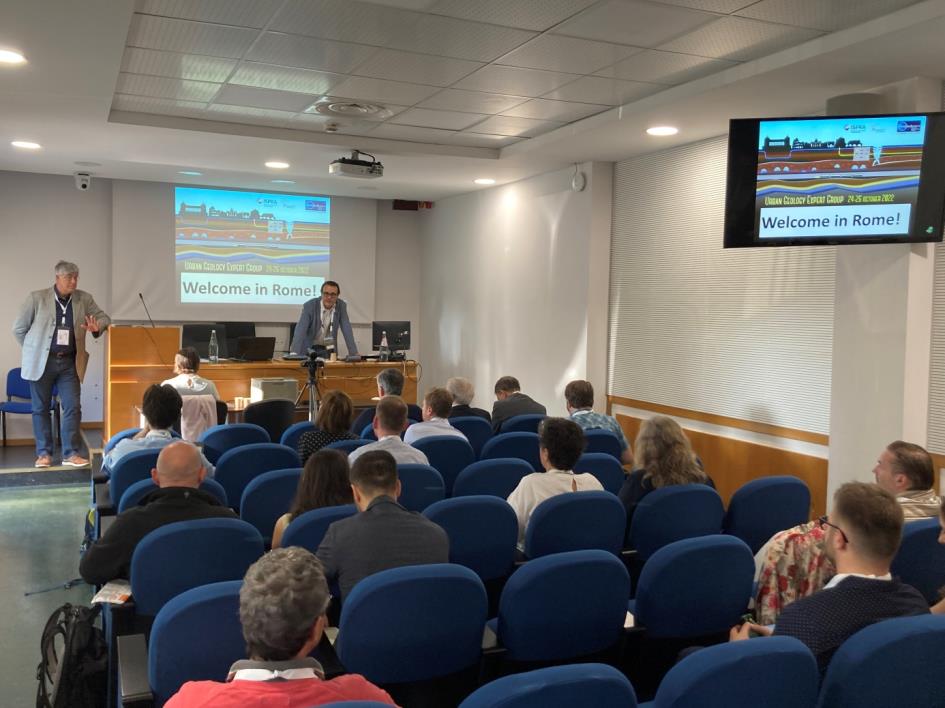
Francesco Lavigna of the Italian Geological Survey ISPRA, the Vice-President of the Urban Geology Expert Group (UGEG) at EuroGeoSurveys, and host of the meeting, welcomes the international group of UGEG delegates to Rome
Discussion of the planned activities within the three main thematic areas of the UGEG on the Integrated City Information Modelling, Geo-environmental pressure in urban, Geoscience communication for cities
Action plan: Networking and organisation of a webinar between UGEG EGS and ITACUS (International Tunneling association on Underground Space) and ISOCARP (International Society of City and Regional Planners).
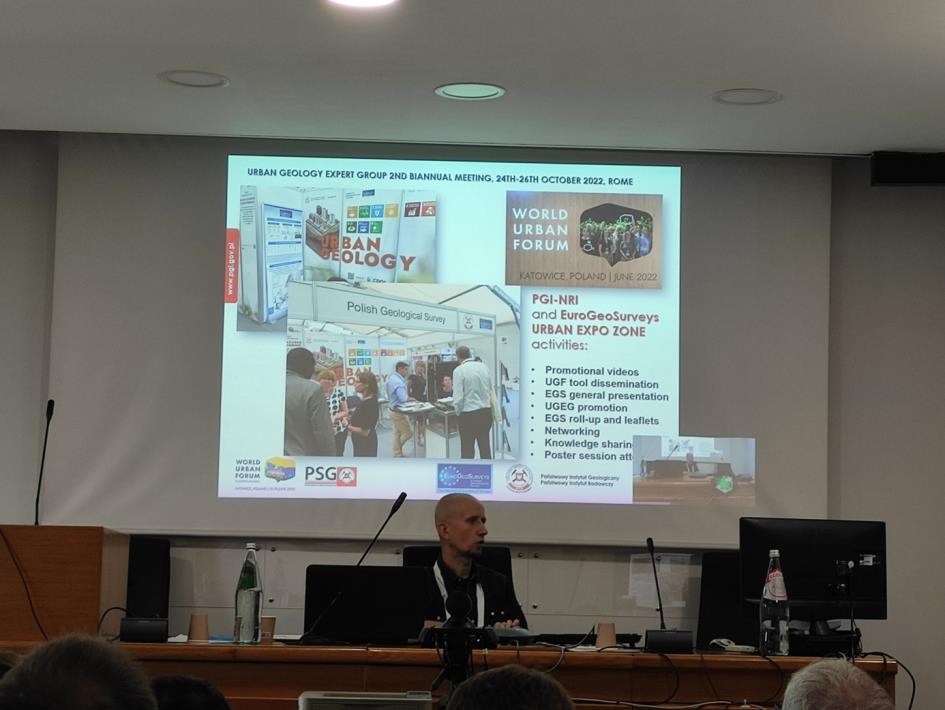
Grzegorz Ryżyński presents a report on PIG-PIB's participation as EGS Ambassador at the World Urban Forum – World Urban Forum WUF11 in Katowice in June 2022
There were three parts to the field trip organised by ISPRA. The first included a visit to the newly constructed 'C' metro line. The second part was a visit to the underground ancient Roman aqueducts from the 5th century BC. The final, third part of the tour was a visit to the anthropogenic caves created by tunnelling in the tuffite overlying the immediate geological bedrock of Rome.
The first part of the tour allowed geologists from the UGEG group to learn about the challenges associated with the numerous ancient archaeological monuments along the route of the newly built metro line in the Rome area. Topics presented during the visit to the construction site of the new 'C' line addressed, among other things, the issues of geodetic monitoring of the deformation of existing monuments and the possible strengthening and protection of their structures and foundations against adverse effects of subsidence from the excavation of the metro tunnels or station excavations.
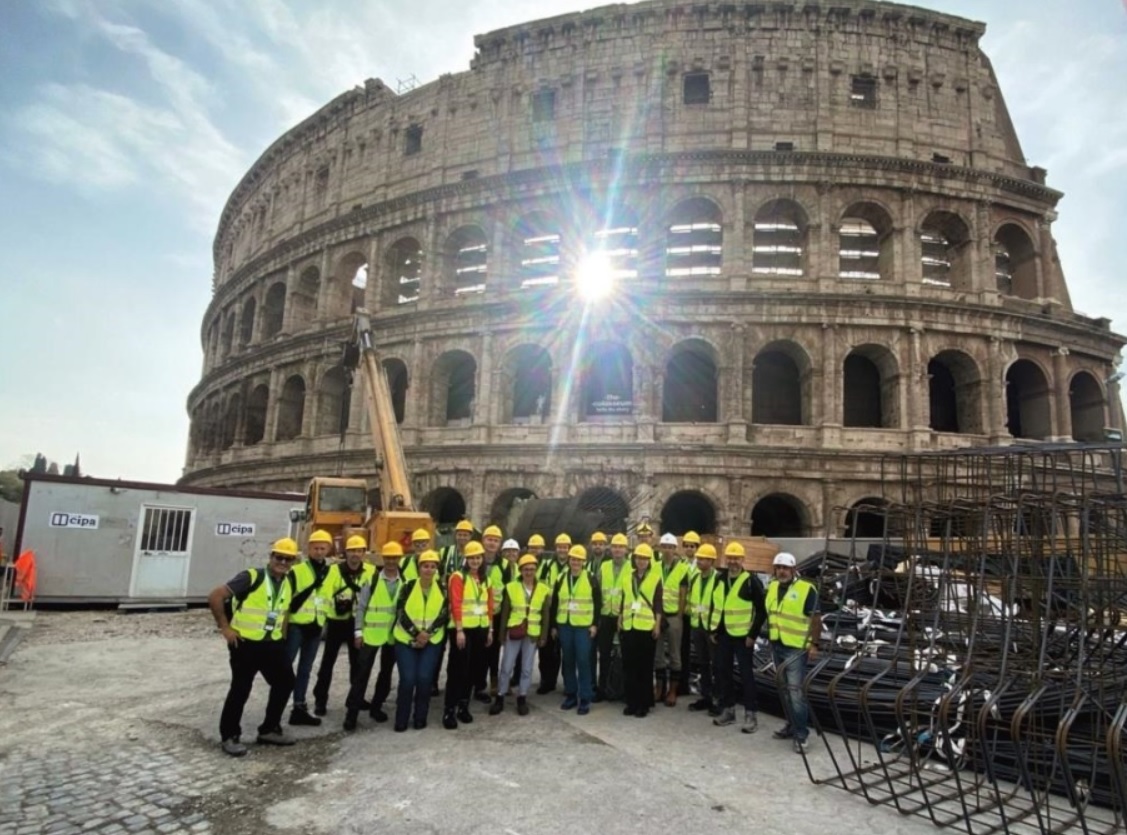
Members of the Urban Geology Expert Group (UGEG) before embarking on a study visit to the Rome metro line C construction site. Day two of the meeting
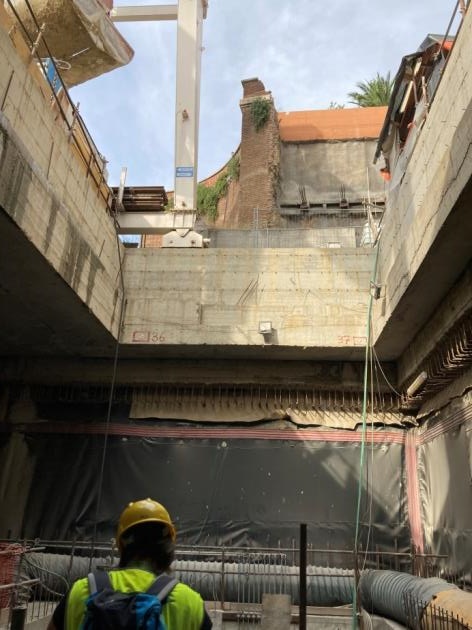
Antique walls situated right in the impact zone of the metro excavation works
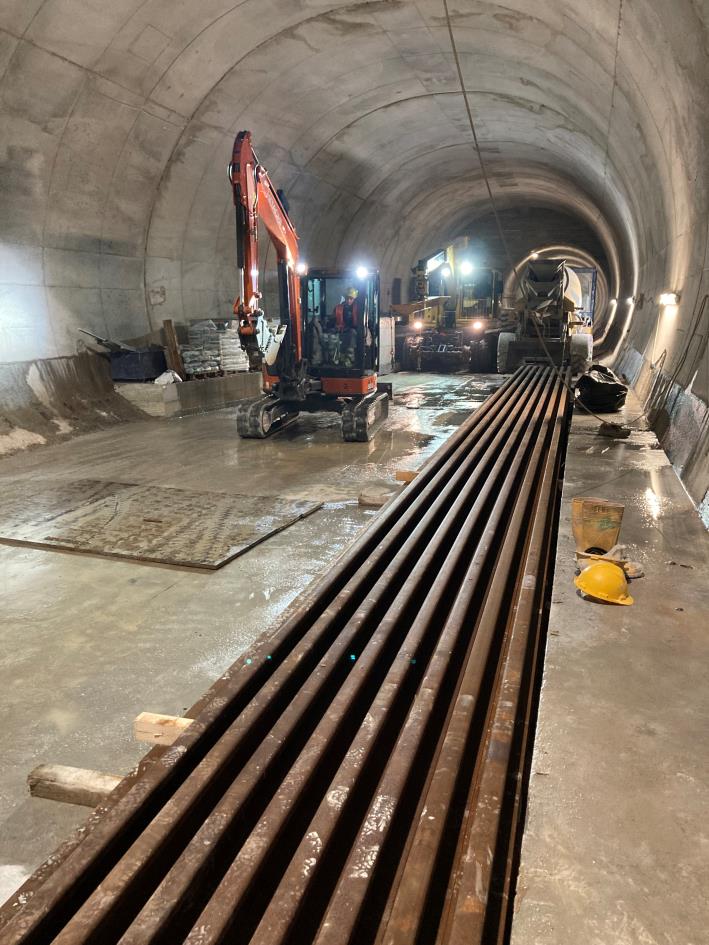
Finishing work – installation of rail infrastructure in the tunnel of metro line C. Rome's underground tunnels are excavated with TBM EPB (Tunnel Boring Machine – Earth Pressure Balance), technology similar to that used in Warsaw
During the second part of the field trip the visitors could explore the ancient underground aqueducts still in operation today.
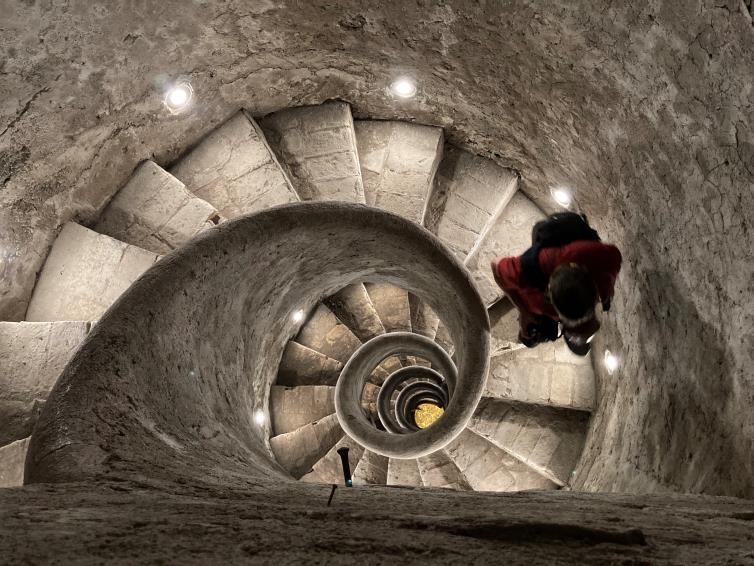
Renaissance spiral staircase leading to ancient tunnels of the aqueducts which are still in use today and which feed the fountains in the centre of Rome
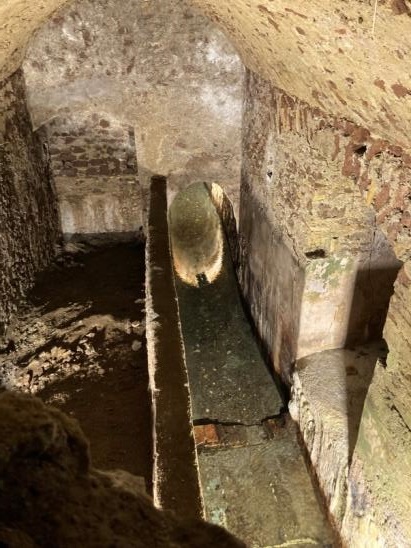
An aqueduct from the 5th century BC. The precision of the ancient engineers is admirable – over the length of more than 20 km, the hydraulic gradient is only 3 m. The aqueduct is still in use today
The third part of the field trip was a visit to the underground caves (pits) carved out in the tufites underlying the geological bedrock of parts of Rome. This is an excellent opportunity to explore the processes of cave infiltration. These tunnels were excavated to obtain construction material for engineering structures since ancient times. In the post-war period, they were used to collect debris after the Second World War and material from the regulation of the Tiber slopes.
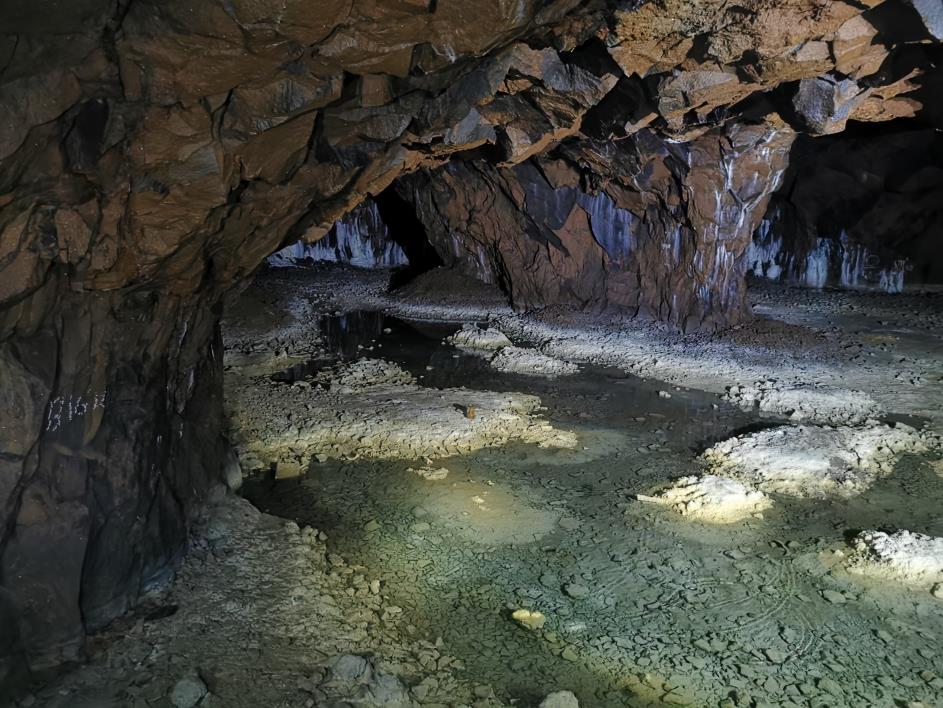
Tufite excavations
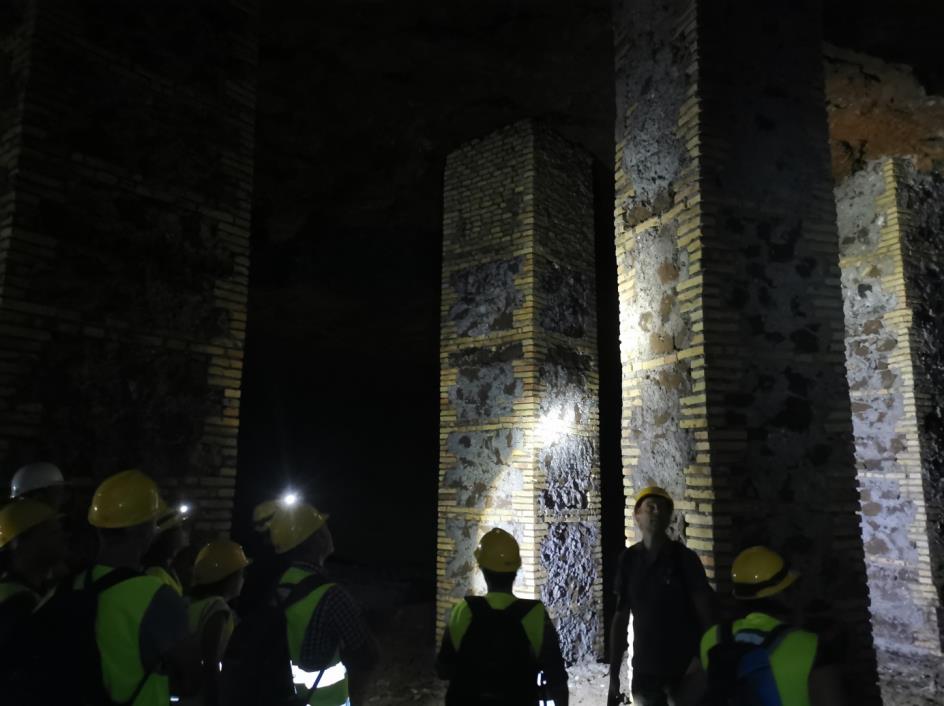
In places at risk of roof fall in excavations as a result of loads from overlying structures, support pillars have been built since historical times
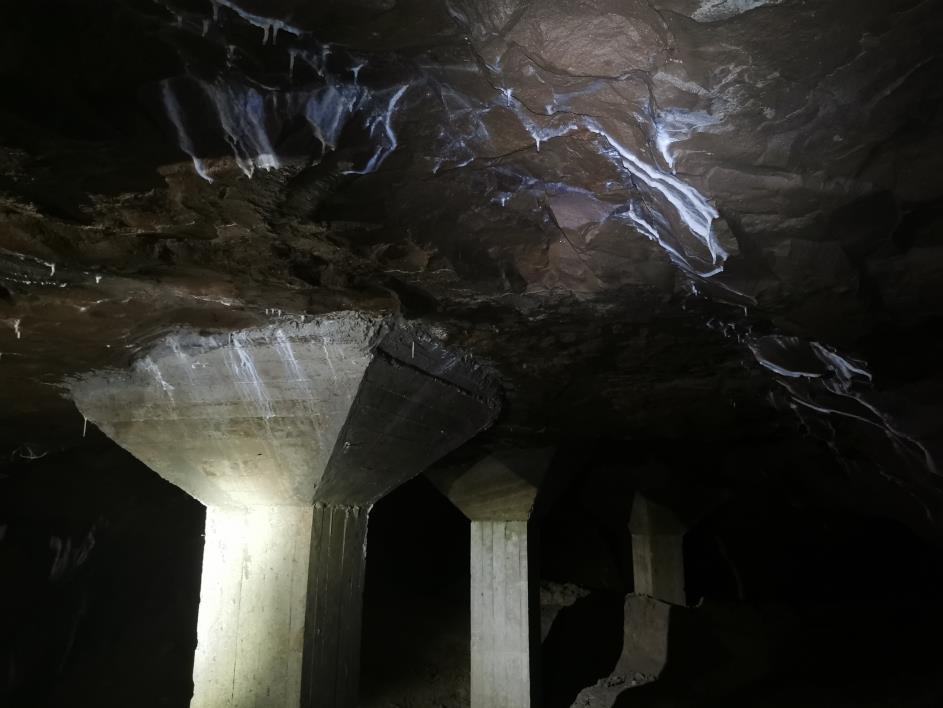
In places at risk of roof fall in excavations as a result of loads from overlying structures, support pillars have been built since historical times.
Safe expansion of Rome requires constant monitoring of the existing excavations. One of the tasks of ISPRA geologists is to periodically inspect the condition of the caves and possibly initiate warning or remedial measures following the identification of new deformations or cracks.
The final day of the meeting included a workshop on the application of the Urban Geo-Climate Footprint (UGF) index developed by ISPRA for European cities. The workshop discussed UGF questionnaires for cities: Warsaw (Poland), Namur and Antwerp (Belgium), Port Au Prince (Haiti), Florence (Italy), Sisak (Croatia), Liberec (Czech Republic), Darmstadt (Germany), Dublin (Ireland). The ISPRA website dedicated to the UGF is available at: ugf.isprambiente.it
The Geo-Climate Footprint (GCF) indicator is a new approach introduced and developed by ISPRA in collaboration with UGEG and the University of Granada (Spain). The UGF is a tool aimed at grouping and classifying cities from a geological point of view. Cities, which, according to the UN, will soon be home to more than half the world's population, are in constant interaction with the geological conditions in which they are located. It is a fundamental assumption of the UGF that cities with similar geological and geographical locations may face similar geological challenges, whether due to common soil, groundwater or geodynamic problems, or the impact of climate change on their surface or coastline.
Having a convenient tool (the UGF indicator), adapted to the needs of non-geoscientists, for easily and quick classification and grouping of cities can be useful to quickly compare and share best practices between them, and to raise awareness among decision-makers and city authorities of the importance of geology in the safe development of cities of the future.
Video footage of the UGF workshop
Further implementation of the UGF tool is planned as part of the GSEU project under the WP8 Task Force – communication, dissemination and use of information. Workshop on the application of the Urban Geo-Climate Footprint indicator.
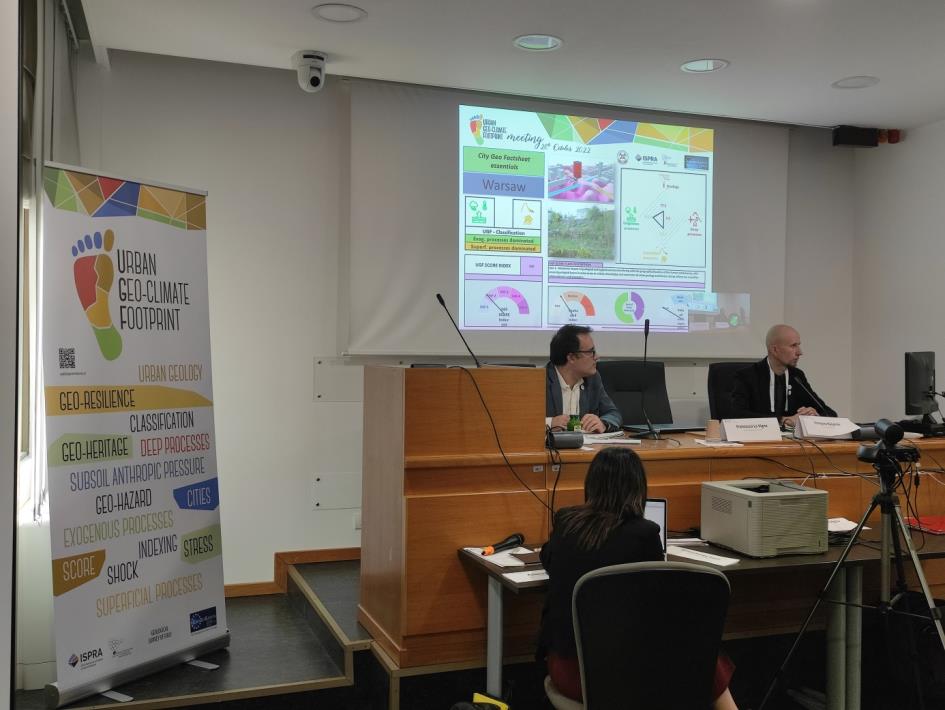
Grzegorz Ryżynski, PGI-PIB delegate, and Francesco Lavigna, UGEG Vice-President, ISPRA, discuss the completed UGF questionnaires for the City of Warsaw.
The Rome meeting should be considered very productive. However, despite the effective work of the UGEG in the online format over the past two years, meetings in the so-called ‘live’ format cannot be replaced.
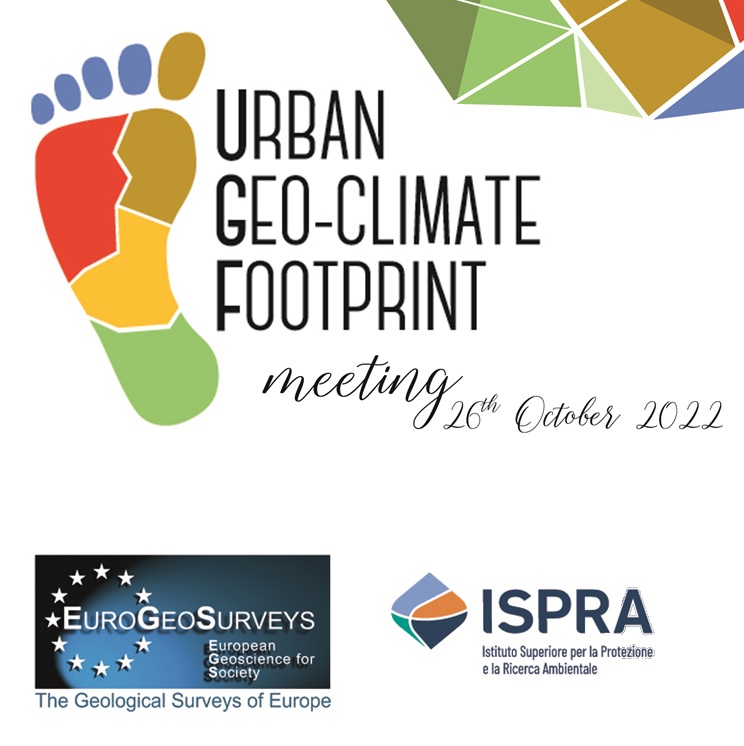
Text: Grzegorz Ryżyński, Jakub Kobiela i Anna Stawicka
Photos: UGEG, Anna Stawicka i Jakub Kobiela














 PGI-NRI offer
PGI-NRI offer Mineral resources of Poland
Mineral resources of Poland  Oil and Gas in Poland
Oil and Gas in Poland 




 Subscribe to RSS Feed
Subscribe to RSS Feed